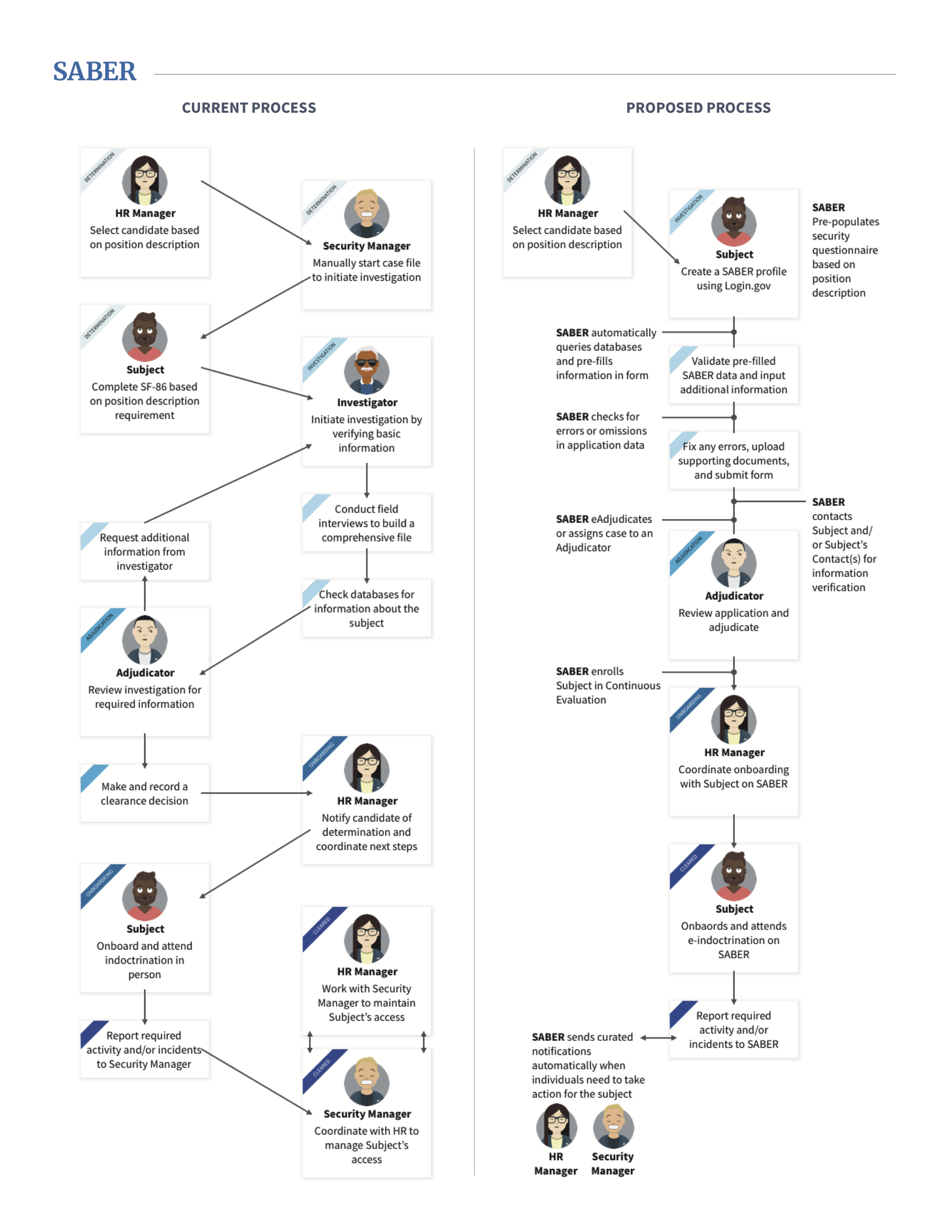Company
Department of Defense
Team
1 product manager
3 engineers
2 designers
My role
Lead user researcher / ux designer
Duration
12 months
Problem
As of April 24, 2019 with the signing of Executive Order 13869, the Department of Defense became responsible (again) for the background investigation mission, formerly carried out by the Office of Personnel Management (OPM). As a result of this transfer of responsibility, the DoD decided to reevaluate the way background investigations and clearance adjudications were conducted, in favor of a less time consuming, more reliable process. The DoD’s Rebel Alliance was tasked with coming up with a solution to balance the security and integrity of investigations with technology and and human intervention. Modernization of the background investigation process and clearance management is imperative as it impacts every federal employee, contractor interacting with the federal government, and all military personnel.
Solution
The System for Automated Background Evaluation and Review (SABER) is an innovative approach at the largely-untouched-since-the-1970s background investigation and clearance management system for the US Government. SABER aimed to maximize the use of technology through data processing and automated data checks in order to empower human employees in the process, when human intervention is necessary.
The SABER team focused on research for nearly a year in order to learn the pain points from all user types as well as discover how to transform this process without compromising national security.
Process
Two of USDS’s core values and guiding principles are go where the work is and design with users, not for them. The SABER team spent a year dedicated to understanding how users, of all types, interact with the background investigation and clearance management processes. In order to do this, our team of engineers, a product manager, and designers traveled across the country and back to speak with applicants (subjects), security managers, investigators, adjudicators, and policy influencers.
Our research effort informed changes to the process from how the questions are phrased on the form applicants complete to how the investigative and adjudicative processes work.
Outcome
As a product, SABER aimed to combined the advantages of human intervention, data automation, and technological inputs to yield higher quality background investigations and more reliable clearance adjudications. About 9 months into this effort, the SABER team selected a vendor to help the DoD build an MVP of the proposed process. This process has not yet been implemented by DoD, but SABER proved that there is a more efficient, equally if not more reliable background investigation and clearance adjudication process to be implemented.
This project was completed while I was working at the US Digital Service’s team at the Department of Defense.
